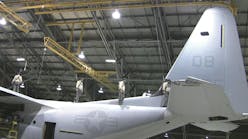AOPA Air Safety Institute Releases 28th Joseph T. Nall Report
The Aircraft Owners and Pilots Association (AOPA) Air Safety Institute (ASI) has released the 28th Joseph T. Nall Report for 2016 which reports that general aviation (GA) fatal accidents continued the previous year's decline even as hours flown marked three years of steady growth.
The 1,214 total accidents for the year rose from the previous annual figure of 1,173, while flight hours grew to 24.64 million from the previous year’s estimate of 23.98 million hours flown.
Significantly, the 195 fatal accidents in 2016 were down from 221 in 2015, an 11.7-percent decrease. Preliminary figures for 2017 suggest another annual decline.
According to Air Safety Institute Executive Director Richard McSpadden, the fatal-accident reduction for general aviation appeared to lend support to the effectiveness of numerous industry initiatives whose goal is to reduce those mishaps. As measured by the decline in fatal crashes, the results suggest that 2016 was one of the safest years for general aviation on record.
“These numbers continue to demonstrate historic performance in aviation safety,” said McSpadden.
The Nall Report analyzes data from the most recent year for which probable causes have been determined for at least 80 percent of accidents. The Nall report covers airplanes with maximum rated gross takeoff weights of 12,500 pounds or less and helicopters of all sizes, accounting for 99 percent of GA flight activity. Flight time of the GA fleet is estimated using the FAA’s annual General Aviation and Part 135 Activity Survey, which breaks down aircraft activity by category and class, and purpose of flight, among other characteristics. Excluded from the analysis are gliders, weight-shift control aircraft, powered parachutes, gyrocopters, and lighter-than-air crafts of all types.
In fixed-wing non-commercial operations, the rates of both fatal and total pilot-related accidents declined, and accidents attributed to weather declined sharply. Still, pilot-related accident causes continued as a stubbornly significant factor in non-commercial fixed-wing aircraft accidents, at 775 accidents, although the 72.9 percent rate indicated a decline from 2015’s roughly 74 percent. Of the 1,036 accidents in the fixed-wing non-commercial category, 185 (17.9 percent) were found to be mechanical in nature. Mechanical causes were noted in 16 percent of the category’s accidents in 2015.
One of the Nall Report’s informative graphs dramatically portrays the sharp decline registered in the weather-accident trend, which has had its ups and downs between 2007 and 2015. In 2016, however, weather accidents—a topic of major emphasis in the industry’s safety awareness campaign—fell off sharply year-over-year from 39 total accidents to a 10-year low of 23, and from 30 fatal weather accidents to 12. As usual, most were attributable to visual flight rules (VFR) flight into instrument meteorological conditions.
In other safety categories:
- There were 64 total commercial fixed-wing GA accidents, of which 19 were fatal, marking a decrease in total accidents but a 10-year high in the fatal category.
- The 40 accidents that occurred during Part 137 agricultural aircraft operations were the most in a commercial fixed-wing category, with maneuvering implicated in half the mishaps. Thirteen Part 137 accidents were fatal.
- The 79 non-commercial GA helicopter accident total of 2016 established a 10-year low. The 17.7-percent fatal-accident rate (14 accidents) increased slightly from 2015.
- There were 35 commercial helicopter accidents, of which three were fatal. The fatal accidents and their rate marked the lowest in 10 years, according to the report.



